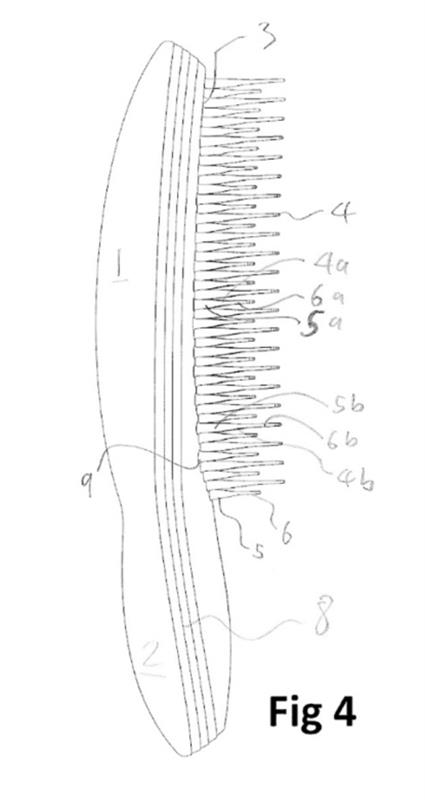One such innovator, Tangle Teezer Limited, has developed a range of brushes, which are designed to detangle hair without pulling.The range includes: ‘The Original’, which was launched shortly after the company’s founder appeared on BBC2’s Dragon's Den; ‘The Compact Styler’, a smaller version that fits inside a handbag; and ‘The Magic Flowerpot’, which was designed to be held and used by children.
Prior to appearing on the TV programme, Tangle Teezer obtained multiple intellectual property (IP) rights to protect its brand name, as well as the appearance and technical features of the brushes.
The company’s focus on innovation hasn’t stopped there and it has recently developed a novel brush that is designed to work better with hair extensions.
Hair extensions can be made from real or synthetic hair and are attached to a wearer's head using an adhesive.Brushing the hair with a normal hairbrush can tug at the extensions, potentially pulling them out, along with any of the wearer’s natural hair, which may have become attached. In addition, brushes already developed to help detangle hair extensions can have the same effect if the bristles extend far enough to reach the fixings.
 The extension-friendly brush, developed by Tangle Teezer, is the subject of a recently-granted UK patent (GB2549765). The invention is specifically designed to overcome the problems experienced by people wearing hair extensions when using ordinary brushes.
The extension-friendly brush, developed by Tangle Teezer, is the subject of a recently-granted UK patent (GB2549765). The invention is specifically designed to overcome the problems experienced by people wearing hair extensions when using ordinary brushes.
The new brush includes an array of bristles, which are tapered so that they are wider at the base than at the tip.The shape of the bristles, which can be easily seen in cross section, means that the base of each bristle is stiffer than the tip.
The rows of bristles that make up the brush come in two lengths, as shown in Figure 4 of the patent (reproduced below).The longer bristles are able to penetrate the thick hair, gently dividing and detangling the hair without damaging the hair extensions.The shorter bristles increase the density of bristles coming into contact with hair at the base of the brush, helping to further divide and detangle tresses of hair that have already been detangled by the longer bristles.
A hairbrush including this arrangement of bristles was considered to be novel and inventive over earlier hair brushes, which resulted in the patent being granted.Therefore, this is an interesting example of how improvements to relatively simple, everyday products can secure patent protection successfully.
Having secured patent protection in the UK for the new brush, Tangle Teezer is able to stop its competitors from making, selling, importing, offering to sell or using a brush as defined by the claims of the patent.
As part of a multi-layered portfolio of IP rights, comprising trademarks, registered designs, patent applications and other patents, the innovator is well positioned to commercialise its invention and bring it to market. Having secured patent protection further afield, in the United States of America and Canada for example, it can also explore potentially-lucrative marketplaces overseas.





